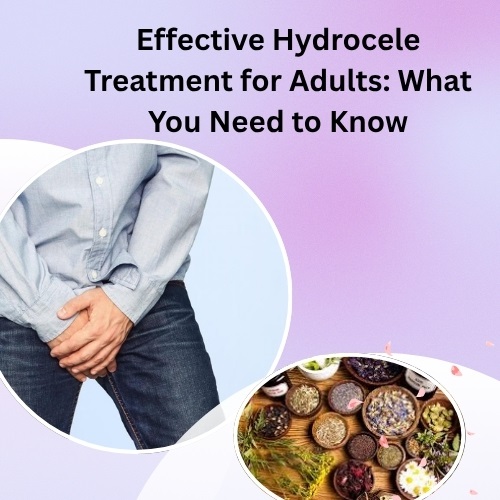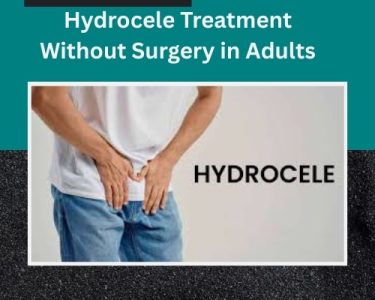What is a Hydrocele in Adults?
A hydrocele is a fluid-filled sac around a testicle, causing swelling in the scrotum. While it’s commonly found in newborns, it can also occur in men, especially over 40. Adult hydroceles often develop due to injury, infection, or inflammation in the scrotum or testicle.
Hydroceles in adults are usually painless, but the swelling can be uncomfortable and affect your day-to-day life. For many, the primary concern is the appearance or size of the swelling, while others may experience a heavy feeling or discomfort when walking or sitting for long periods.

Causes of Hydrocele in Adults
Understanding the cause of a hydrocele can help determine the best approach to treatment. The most common causes include:
- Injury or trauma to the scrotum
- Infection such as epididymitis or orchitis
- Post-surgical complications
- Blocked lymphatic system preventing fluid drainage
- Underlying medical conditions like a tumour or hernia (rare but serious)
Common Symptoms of Hydrocele
Although hydroceles may not always cause symptoms, you might notice:
- Swelling on one or both sides of the scrotum
- A feeling of heaviness in the scrotum
- Discomfort or pressure when sitting or walking
- A sensation that the scrotum is full or tight
If the swelling becomes painful, or if it rapidly increases in size, consult a healthcare professional as it might suggest infection or a more serious condition.
Diagnosis: What to Expect
Your doctor will likely begin with a physical examination. To confirm a hydrocele, they may:
- Shine a torch through the scrotum (transillumination) – fluid will glow red
- Perform an ultrasound to rule out hernias, testicular torsion, or tumours
- Recommend urine or blood tests if infection is suspected
Best Treatment for Hydrocele in Adults
There are several approaches to treating a hydrocele, depending on the cause, size, and how much it bothers you. In many cases, small hydroceles that don’t cause discomfort can be monitored without immediate treatment.
Let’s explore the most common hydrocele treatment for adults:
1. Observation (Watchful Waiting)
If the hydrocele is small and not painful, your doctor might recommend doing nothing immediately. Some hydroceles resolve on their own, especially if they result from an infection or injury.
You may be advised to:
- Wear supportive underwear to reduce discomfort
- Avoid heavy lifting or straining
- Return for regular check-ups to monitor the size
This is often the first step in adult hydrocele treatment, especially for those hesitant about surgery.
2. Hydrocele Treatment Without Surgery in Adults
Some adults prefer non-surgical methods, particularly if surgery carries risk due to age or existing health conditions. While non-surgical options are limited, they may be suitable in specific cases.
- Aspiration
This involves using a needle to drain the fluid from the hydrocele. It’s a simple outpatient procedure and provides immediate relief. However, the fluid may return over time.
To reduce recurrence, doctors sometimes combine aspiration with sclerotherapy, where medication is injected into the sac to prevent fluid from re-accumulating.
Keep in mind:
- This method carries a small risk of infection or bleeding
- It may need to be repeated if the hydrocele returns
- It’s usually recommended for older adults or those unfit for surgery
If you’re looking for hydrocele treatment without surgery in adults, this could be a practical option to discuss with your specialist.
Related Article: Natural Ways to Avoid Hydrocele: Eating Healthy, Exercising, and More
3. Surgery (Hydrocelectomy)
Surgical removal is the most effective long-term solution. A hydrocelectomy involves making a small incision in the scrotum or lower abdomen to drain and remove the fluid-filled sac.
Key points:
- Usually performed under general or regional anaesthesia
- Most patients return home the same day
- Recovery time ranges from 1 to 2 weeks
- You may experience mild discomfort, bruising, or swelling post-op
Surgery is usually recommended for:
- Large hydroceles causing discomfort
- Recurrent hydroceles after aspiration
- When infection, hernia, or tumour needs to be ruled out
Surgical hydrocele treatment for adults is safe and effective, with a low risk of complications when done by an experienced surgeon.
Related Article: Foods for the Treatment of Hydrocele: What to Eat and Why It Matters
Recovery After Hydrocele Treatment
After Aspiration or Sclerotherapy:
- You may resume normal activities within a day or two
- Avoid strenuous activities for at least 48 hours
- Wear a jockstrap or supportive underwear for comfort
After Hydrocelectomy:
- Take painkillers as prescribed
- Avoid lifting, cycling, or heavy exercise for a few weeks
- Keep the area clean and dry to prevent infection
- Swelling and tenderness may last for a few days
Your doctor will guide you on when to return for a follow-up. Most patients make a full recovery without complications.
Related Article: Exploring the Effects of Hydrocele on Urination
Natural Remedies and Lifestyle Adjustments
While there is limited evidence that natural remedies can shrink a hydrocele, some lifestyle tips may help ease symptoms:
- Apply cold compresses to reduce scrotal swelling
- Avoid prolonged standing or sitting
- Wear loose-fitting clothing for comfort
- Eat anti-inflammatory foods like ginger, turmeric, and omega-3s
- Stay hydrated to support lymphatic drainage
Although these approaches won’t replace medical treatments, they may support comfort while you consider hydrocele adult treatment options.
When Should You See a Doctor?
It’s important to seek medical advice if you notice:
- Sudden or painful swelling in the scrotum
- Signs of infection (fever, redness, heat)
- Persistent or increasing discomfort
- Hydrocele returning after previous treatment
Prompt diagnosis ensures that serious causes like testicular torsion or cancer are ruled out.
Related Article: Does Hydrocele Increase the Risk of Erectile Dysfunction?
Frequently Asked Questions
Can a hydrocele go away on its own?
Yes, particularly if it’s small and caused by infection or injury. However, if it persists beyond six months, treatment may be necessary.
Is hydrocele dangerous?
Most hydroceles are harmless, but they can be uncomfortable. Large or recurrent hydroceles should be treated to prevent complications or rule out underlying issues.
Is surgery the only permanent solution?
Surgery offers the most lasting results, but aspiration and sclerotherapy are suitable alternatives for certain patients. If you’re considering hydrocele treatment without surgery in adults, consult a urologist to weigh the pros and cons.
Related Article: Hydrocele Treatment Tablets: Exploring Different Types and Uses
Final Thoughts
Choosing the best treatment of hydrocele in adults depends on your symptoms, overall health, and personal preferences. While some hydroceles require no treatment at all, others might need a simple procedure or surgical intervention.
If you’re exploring options, speak with a healthcare professional to determine the safest and most effective approach. For those seeking non-surgical alternatives, hydrocele adults treatment with aspiration or sclerotherapy may provide relief without a long recovery. You can also read more about what is best treatment for hydrocele in adults for deeper insight into available options and how to manage the condition confidently.




